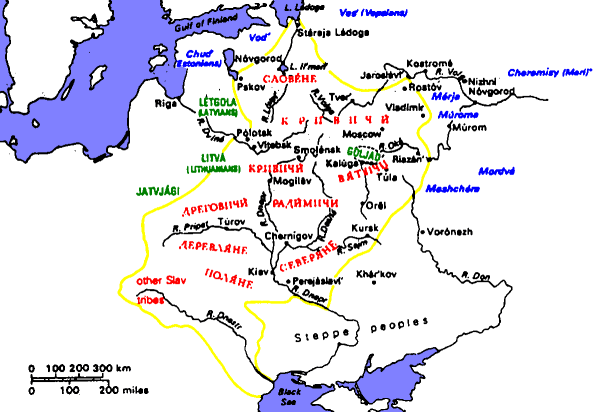Introduction

The Slavic languages (also called Slavonic languages), a group of closely related languages of the Slavic peoples and a subgroup of Indo-European languages, have speakers in most of Eastern Europe, in much of the Balkans, in parts of Central Europe, and in the northern part of Asia.
History
All Slavic languages are descendants of Proto-Slavic, their parent language.
Mainstream historical linguists postulate that Proto-Slavic in turn developed from the Proto-Balto-Slavic? language, a common ancestor of Proto-Baltic, the parent of the Baltic languages. According to this theory, the "Urheimat" of Proto-Balto-Slavic lay in the territories surrounding today's Lithuania at some time after the Indo-European language community had separated into different dialect regions (c. 3000 BC).
The process of separation of Proto-Slavic speakers from Proto-Baltic speakers presumably occurred around 1000 BC.
Early expansion of Slavic languages

Yellow = the area of continuous Slavic population after early expansion.
Conjugations
Slavic languages make a differentiation between perfective and imperfective aspect of verbs.
Language Family Tree
Indo-European > Classical Indo-European > Balto-Slavic > Slavic- East Slavic
- Ukrainian-Rusyn
- [bel] Belarusian
- [orv] Old Russian
- [rus] Russian
- South Slavic
- Eastern South Slavic
- Macedo-Bulgarian
- [bul] Bulgarian
- [mkd] Macedonian
- [chu] Church Slavic
- Macedo-Bulgarian
- Western South Slavic
- [kjv] Kajkavian
- [hbs] Serbian-Croatian-Bosnian
- [svm] Slavomolisano
- [slv] Slovenian
- Eastern South Slavic
- West Slavic
- Czech-Slovak
- Lechitic
- Sorbian
- [dsb] Lower Sorbian
- [hsb] Upper Sorbian